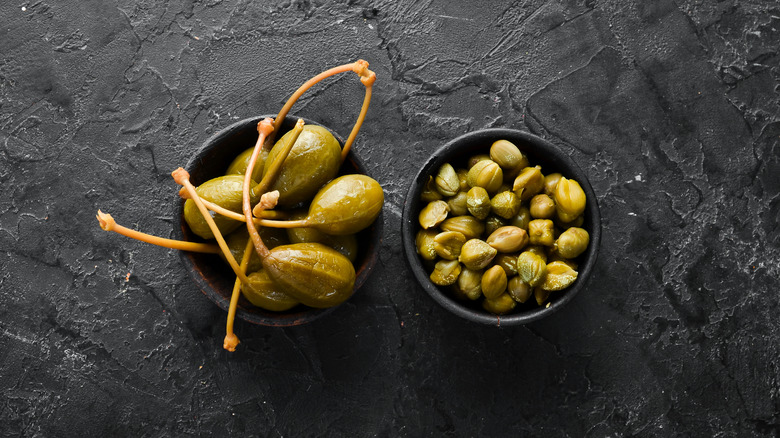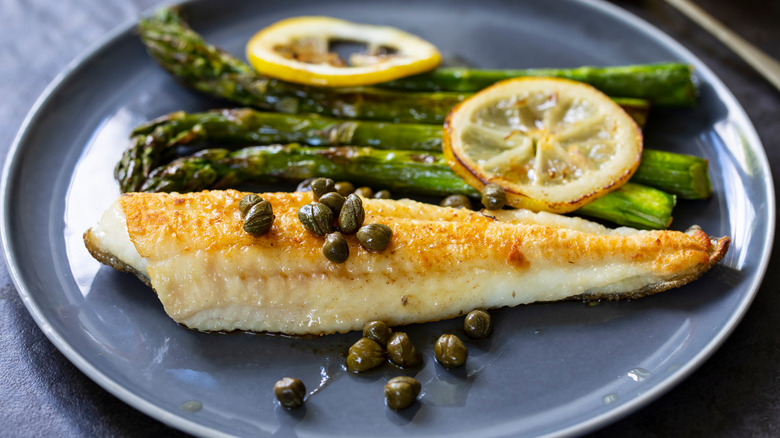Read This Before Eating More Capers
Capers are magnificent little flavor bombs, aren't they? These zingy and piquant flour buds lend saltiness, sourness, and acidity to favorite foods like bagels and lox, chicken piccata, salads, pastas, sauces, roasted vegetables, and even pizza. If you want to enliven a savory dish, capers can do the trick.
According to Cook's Illustrated, capers are the unbloomed buds of the shrub Capparis spinosa. This plant is native to the Mediterranean. In Italy, Spain, and France, especially the in "caper capital" of Roquevaire, Provence, Capparis spinosa are grown for the purpose of cultivating capers. You'll also find them growing in parts of Asia, the Middle East, North Africa, Turkey, and California, according to the HuffPost. And though we usually associate capers with Mediterranean cooking, these little buds managed to cross the English Channel several hundred years ago, as is evidenced by their appearance in 17th century English cookbooks.
Capers are never eaten fresh; they're picked at various stages of maturity. "Caper berries" are the size of an olive and sometimes are seen on antipasti platters, but the small, dark green nonpareil sized capers are the most commonly used in cooking. They are dried, and then brined or cured in salt before being packaged and sold. According to Cook's Illustrated, the brined variety are the most commonly used in the U.S. because they can be used straight from the jar, whereas their salt-packed counterparts need to be soaked and rinsed before use.
Why you should rethink your caper intake
We know that for heart health, we should watch our sodium intake, and anyone who's tasted a caper knows they are rich in this mineral. Many home cooks have a little jar of tasty brine-soaked capers in their refrigerator or pantry, and while these have less sodium than capers that are packaged in salt, they are still very high in sodium. Mashed looked at the nutrition labels for several brands of capers and found that a one-tablespoon serving contains about 16% of the recommended daily allowance of sodium. Salt-packed capers have even more sodium, about 21% of your RDA for one tablespoon, as noted by Eat This Much.
If you're trying to limit your sodium intake, rinsing your brine-packed capers before adding them to your recipe will reduce some of the salt content. Salt-packed capers should always be soaked in water for 15 minutes and rinsed before use. According to San Francisco Gate, you can also manage the sodium content of a dish by using capers as a replacement for the salt called for in the recipe.
The good news about capers is that they're very low in calories (about 3 calories per tablespoon), making them a great way to add flavor to your favorite dishes. Just be mindful of your daily sodium budget when using these savory little buds.

